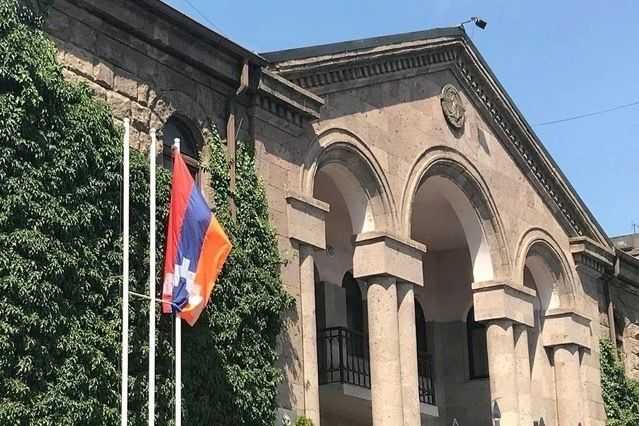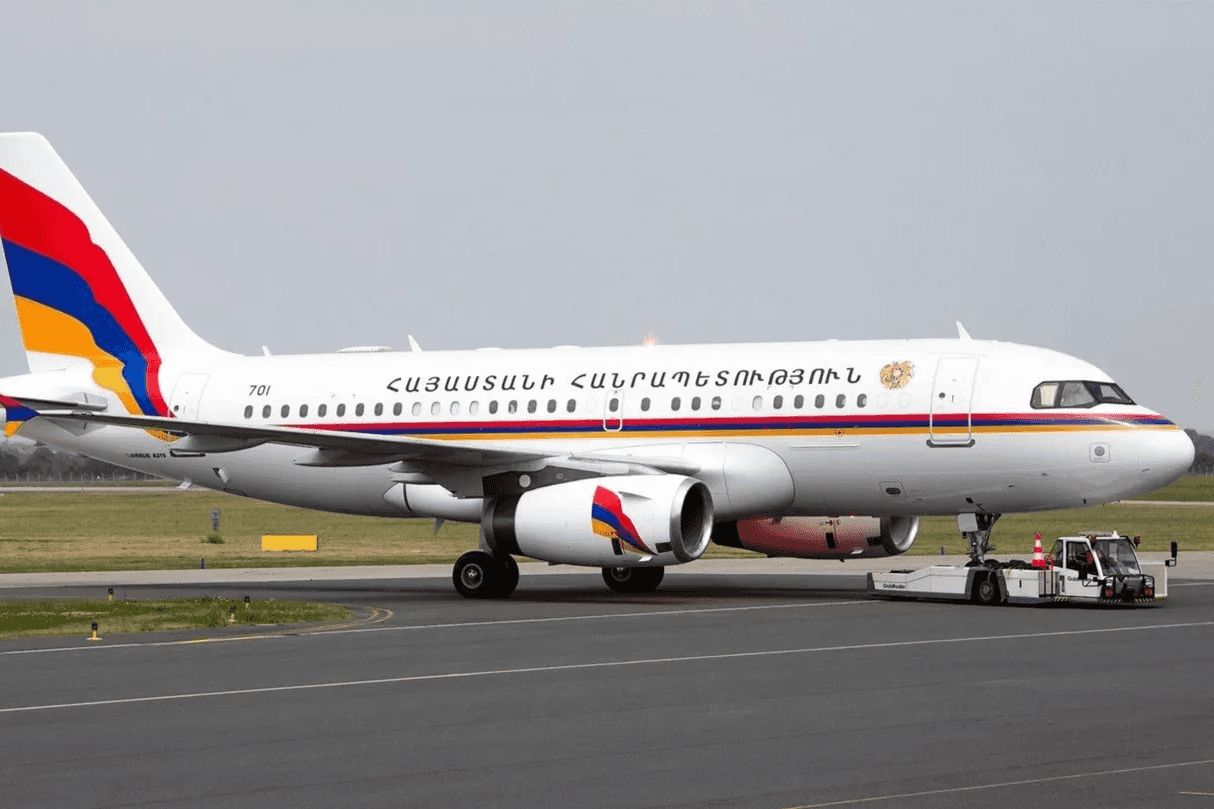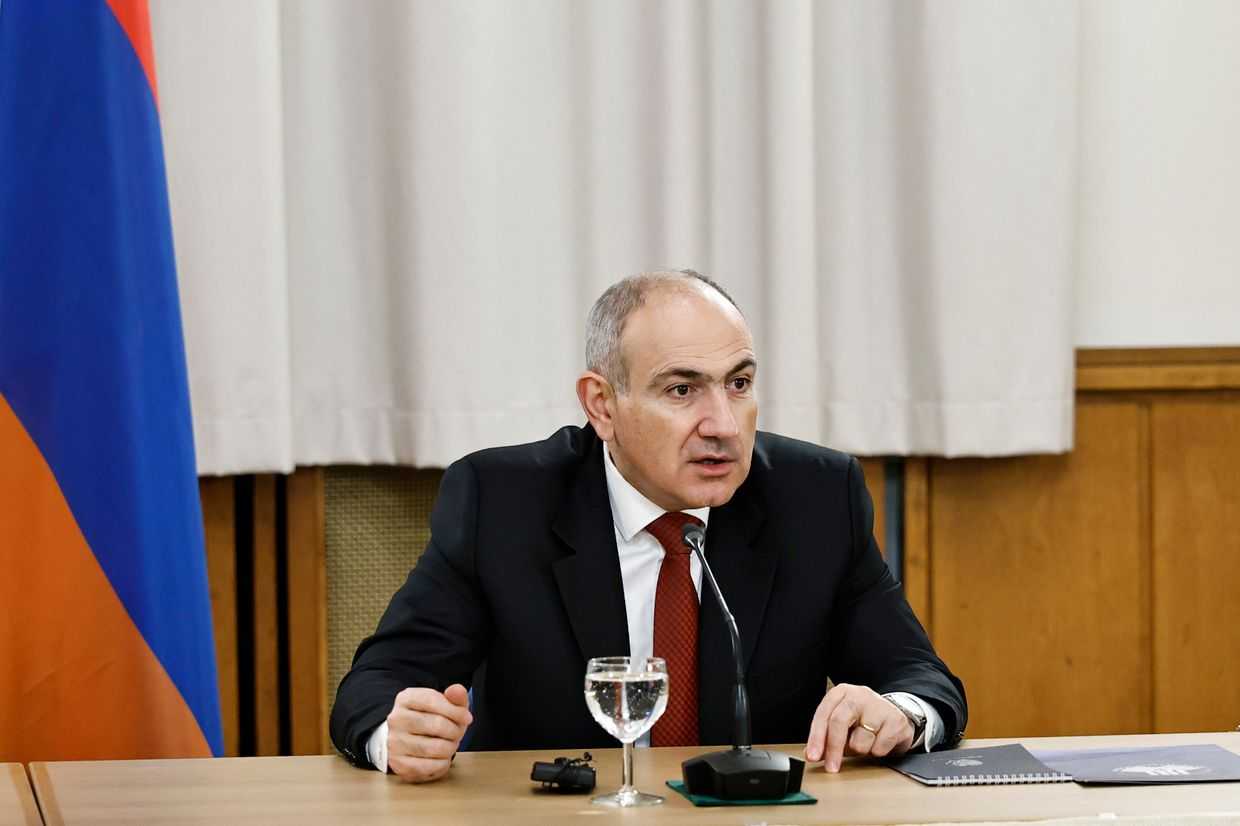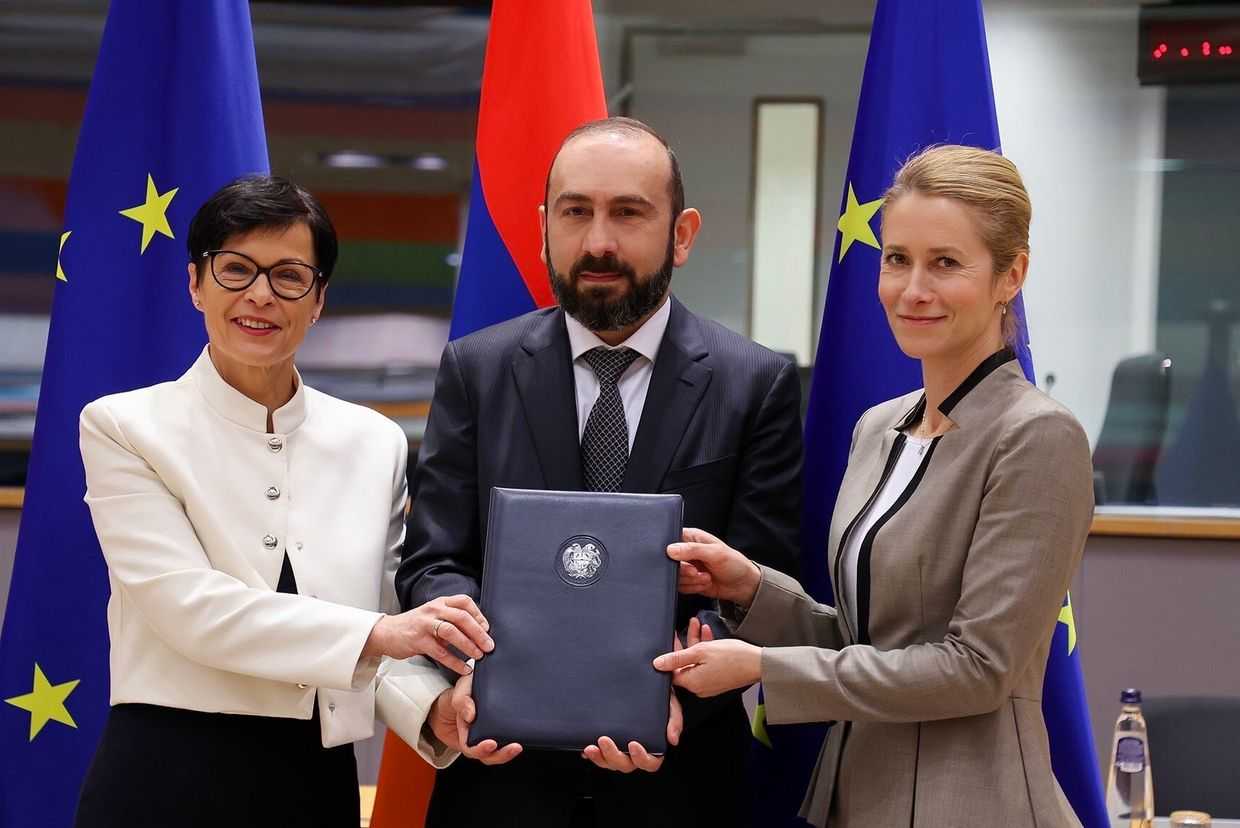
A small hotel in the capital of Nagorno-Karabakh unites several families who fled their homes during the recent war and provides a space to rekindle their hopes of finding a place to call home again.
One of the two entrances of the Ed-Em hotel located near the central square of the capital is quiet, silent almost — the only sound, a ‘tap – tap – tap’ comes from the receptionist typing distractedly on his phone.
But this is no ordinary hotel, and those who stay there, are no ordinary guests.
To meet them, you have to enter the hotel by another door, which leads not to a lobby but a small inner courtyard. There, the moment you walk in, the silence of Ed-Em lifts and is replaced by the lively exchange of women’s voices.
The group of four women sit on white plastic chairs arranged in a semi-circle and are engaged in an intense discussion about the plans for that day’s dinner. Behind them, a series of doors. In better days, these each led to a hotel suite, but for these women, they’re home.
Ed-Em houses seven displaced families, roughly 30 people — a drop in the ocean of a total of 20,000 residents of Nagorno-Karabakh who still remain displaced since the war in 2020.
This handful of people all carry a heavy burden — for them, the recent loss of home is only the latest in many chapters of war, ethnic violence, and loss.
Yet, despite the weight of memory within its walls, Ed-em is not a place of mourning. Instead, it has also served as the incubator of a new community that now harbours new, if quiet and troubled, hopes for a better future for their lives in Nagorno-Karabakh.
A ‘normal’ life
Sixty-year-old Natalia Danilova-Ghahramanyan was one of the women taking part in the discussion about dinner. She was a passionate advocate for that evening’s meal to include dolma, a dish made of ground meat wrapped in grape leaves — indeed, her commitment for that evening’s meal had been such that she had already got the ingredients ready. You could see them from the courtyard, through the window into her room. They were sitting on a table, waiting to be cooked.
Natalia and her son have lived in Ed-Em for over half a year. Unlike the other displaced women living at the hotel, she is not Armenian, but Russian.
Natalia tied her life to Karabakh over forty years ago, with little knowledge of what it would bring.
‘I’m the bride from the North’, Natalya says to me, smiling.
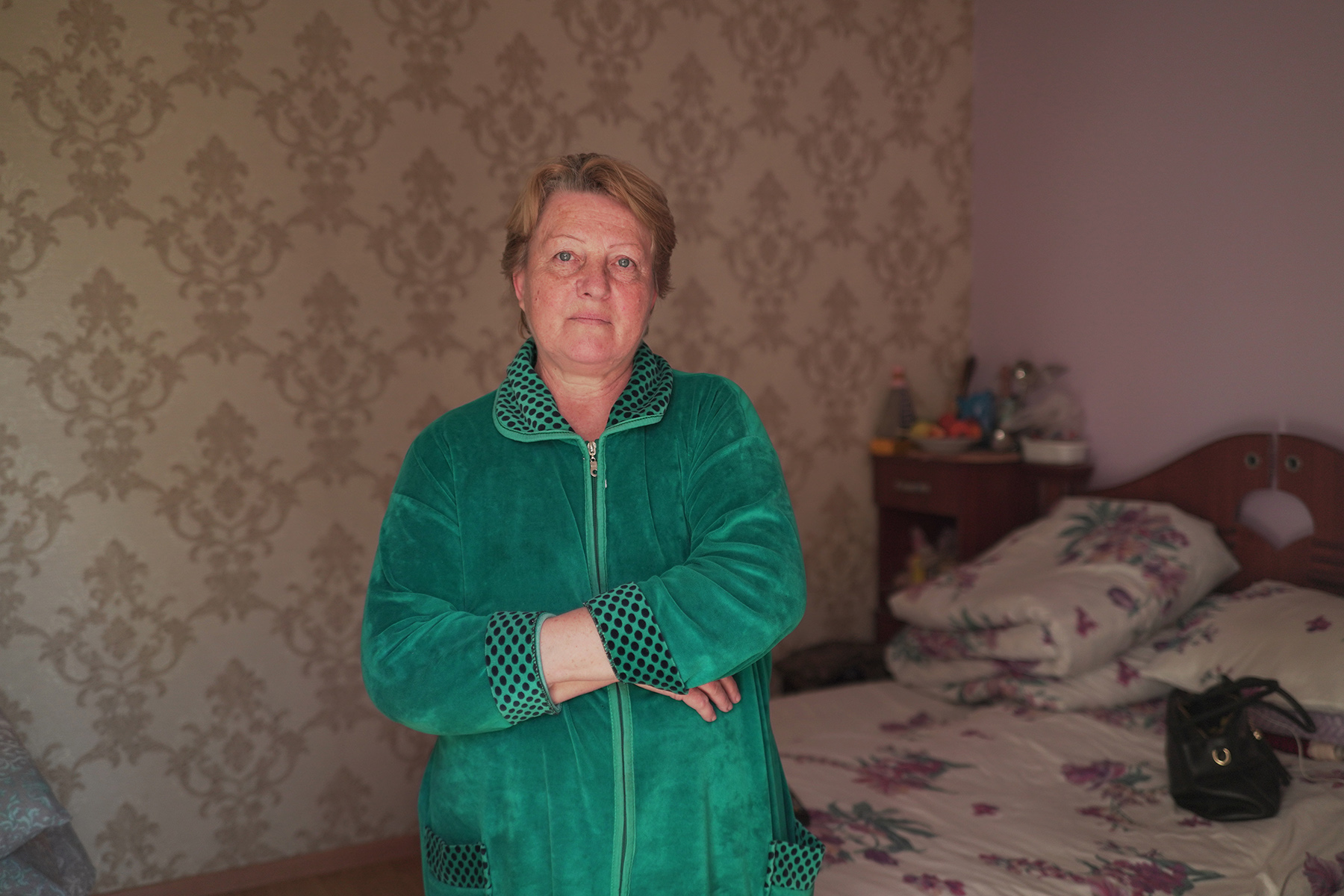
Natalia met her husband Vitaly Ghahramanyan in Soviet Russia in the 1970s, when he was completing mandatory military service in Natalia’s hometown. She was only 17 when they first met.
‘It was common for soldiers from the Soviet countries to marry Russians and take them home’, Natalya explains.
In spite of this, the couple first planned to settle in Russia, because Vitaly didn’t want them to move to Nagorno-Karabakh. But after her visit to the region, Natalya fell in love with the place and convinced her husband otherwise.
They settled down in the village of Domi [Tumi], in the Hadrut region of the Nagorno-Karabakh Autonomous Oblast. They raised three children there, two daughters and a son.
Natalia worked in the village as an accountant, while her husband served in the military in the neighbouring region of Fizuli (since renamed Fuzuli by the Azerbaijani government).
She recalls the relationship between Armenians and Azerbaijanis living in Nagorno-Karabakh during the Soviet period as one with ‘differences and difficulties’ but one that was ultimately ‘normal’. There were certainly many friendships across ethnic lines.
In 1988, when the first serious inter-ethnic violence between Armenians and Azerbaijanis took a violent and deadly turn Vitaly, who found himself in the midst of a nationalist and anti-Armenian protest in Fizuli, was hidden by Azerbaijani friends in one of their homes until the protesters ‘calmed down’.
‘They saved him’, Natalia says.
A girl from Baku
The childhood memories of Nina Ghahramanyan (no relation to Natalia), another resident of Ed-Em, are also crowded with moments illustrating the ‘normal’ relations between Armenians and Azerbaijanis in prior decades.
‘I remember Armenians living pretty well in Baku’, says Nina, citing as an example her own relatively wealthy family. Her father, the main breadwinner, worked in upper management at a television channel in the Azerbaijani capital.
In 1987, Nina’s father decided that Nina and her siblings needed to brush up on their Armenian, and decided to relocate the family to a summer home in Hadrut. The move was ever only meant to be temporary.
But not long after, in 1988, a deadly anti-Armenian pogrom broke out in the industrial Baku suburb of Sumgait. Fearing further violence, many Armenians fled their homes, some relocating to Armenia, Russia, and some, to the majority-ethnic Armenian Nagorno-Karabakh Autonomous Oblast.
The last member of the Ghahramanyan family to leave Baku was Nina’s grandmother, the director of a local kindergarten.
In late 1989, a few months before the pogrom of January 1990 drove the last remaining Armenians out of Baku, a high-ranking member of the Baku police, a friend of Nina’s grandmother, convinced the elderly woman to flee the city, telling her that if anti-Armenian violence broke out in the city he would not be able to protect her.
He drove her to Hadrut, where she joined the rest of her family. She never saw Baku again.
‘Everything bad’
In November 1994, Natalia and Vitaly Danilova-Ghahramanyan celebrated the end of the First Nagorno-Karabakh War. It had been six years since Vitaly’s life was saved by his Azerbaijani friends.
But the end of the war did not mean a total end to hostilities. The ceasefire was shaky, and occasional clashes still broke out on the line of contact.
Vitaly was shot dead only a few months after the war ended.
After losing her husband, Natalia decided to stay in Nagorno-Karabakh. She moved to the city of Hadrut and started working as a military cook.
‘Back then I had the chance to move back to Russia as my parents were still alive and I had a place to stay’, she says.
‘But I couldn’t take my kids away from their home.’
On 27 September 2020 Natalia realised she had no choice. Azerbaijan had launched a major offensive, and Hadrut was not far from the line of contact. They found refuge in Yerevan — and it was there that they learned the news, in early October, that Azerbaijani forces had taken Hadrut. Grisly videos of Azerbaijani soldiers executing civilians who had stayed behind in the town came out shortly thereafter.
Despite vivid memories of a time when Armenians and Azerbaijanis lived as neighbours, Natalia is pessimistic about reconciliation between the two peoples. ‘Maybe’, she begins to say, but then shakes her head. ‘No, there’s no maybe. Both nations will remember everything that happened — everything bad’.
It will take ‘decades of peaceful life and a change of generations’ for reconciliation to be possible’, Natalia says ruefully.
‘Until the last moment’
Nina Ghahramanyan too prefers to remain silent about the possibility of reconciliation, remembering her stories of two, ‘nearly three’ displacements.
Her family remained in Hadrut throughout the First Nagorno-Karabakh war.
After an illness took the life of Nina’s father in the early 2000s, her mother decided to pursue a career in the military. Nina followed her.
‘We were given houses as we were in military service. After losing everything in Baku, it meant a lot’, she says.
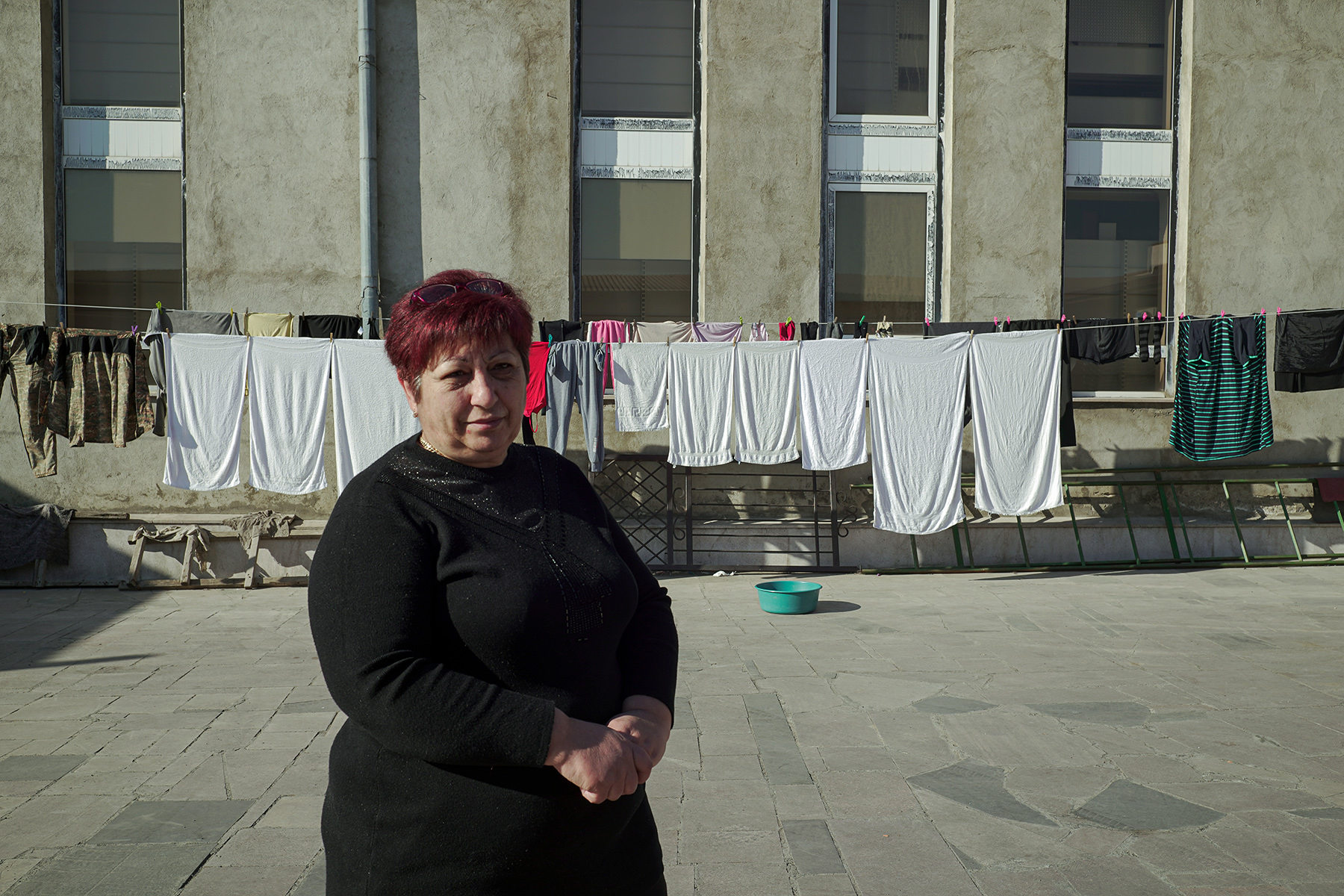
She began working as a military cook but over time climbed the ranks into becoming an officer — retired by the time of the 2020 war, Nina said she wanted to stay, even when Hadrut fell.
‘I was there until the last moment’, she says. ‘I was told by the neighbours to go with my family members who left for Yerevan then. But I couldn’t. I couldn’t leave when my sons were fighting’.
But as Azerbaijani forces began to close in on the Nagorno-Karabakh capital of Stepanakert [Khankandi], Nina finally left. With no home to return to, she found temporary accommodation in Yeghegnadzor, in Armenia’s province of Vayots Dzor. She returned to Nagorno-Karabakh in the summer of 2021 and was reunited with her sons, now veterans of the Second Nagorno-Karabakh War.
Sharing the kitchen
If the younger residents of the hotel spend their time outside — working or studying, the older women at Ed-Em spend most of their time inside, sharing between each other one kitchen, and their memories.
The kitchen is small and located in another building near the living quarters. It has one washing machine, one oven and a freezer. Before the Second Nagorno-Karabakh War, it used to serve as a makeshift office for the hotel’s security guard.
‘The kitchen is fine for all of us’, 45-year old Haykanush Melkumyan tells me, smiling. ‘We never fight for it.’
Haykanush, unlike the other women in the hotel, is more silent, talking about the present more than the past. The young grandmother of a newborn boy lives with her divorced daughter in a one-room apartment. She too is divorced.
Like Nina and Natalia, Haykanush joined the military, where she worked as a cook. Unlike her neighbours, however, she still serves — now in a communications role.
All of her memories before the Second Nagorno-Karabakh War are connected with Hadrut, she tells me. A peaceful happy childhood, the first war, marriage, children, then just like that, she says, her home was taken from her.
‘It’s like you lose everything in one day’, she laments.
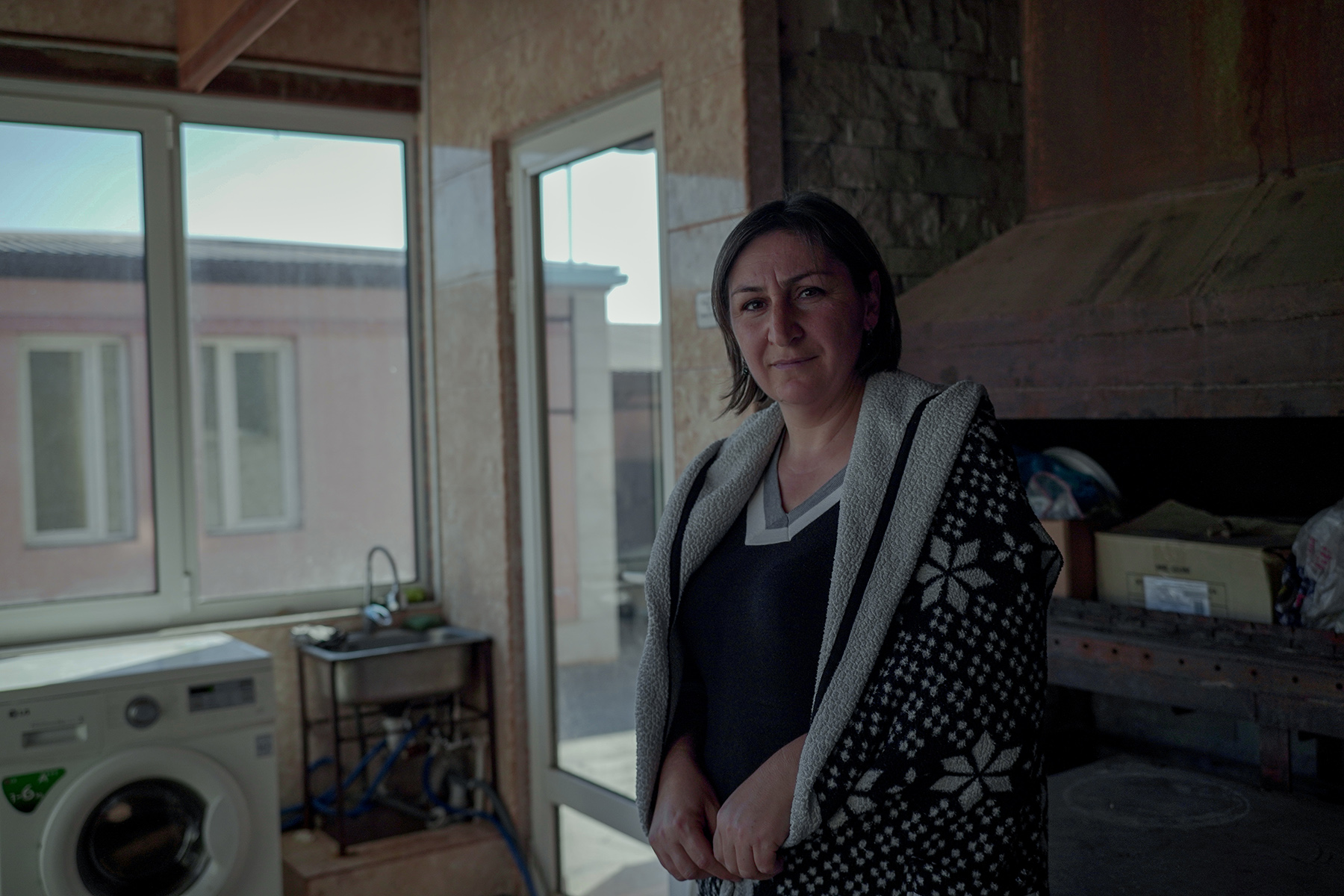
She was just a child when the First Nagorno-Karabakh war broke out. Her family stayed in Hadrut all the while. She never thought the town could fall. She was in Hadrut in the first days of the second war working as a radio operator for the military, as well as helping organise food delivery and medical aid.
She left Hadrut in early October 2020, as part of an Armenian military withdrawal from the town. She remained in Nagorno-Karabakh throughout the entirety of the war.
Now, she looks toward an uncertain future.
‘The authorities say they are building new houses and planning to continue the financial aid’, she says. ‘I don’t know what I should hope for.’
‘It will be fine, they say’, she adds, looking doubtful. ‘But we have lost the hope for stability’.
In spite of it all, she has no plans to leave.
‘I will stay here’, she says. ‘What else should I do?’
For ease of reading, we choose not to use qualifiers such as ‘de facto’, ‘unrecognised’, or ‘partially recognised’ when discussing institutions or political positions within Abkhazia, Nagorno-Karabakh, and South Ossetia. This does not imply a position on their status.


